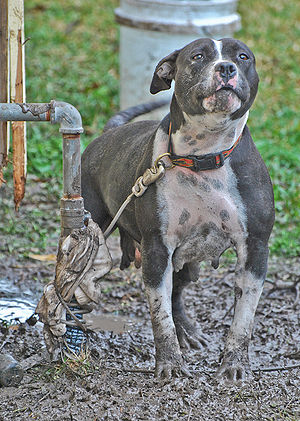
Beth Zimmerman, who writes The Wet Nose Blog E-Newsletter for Pets For Patriots, encourages us to recognize and report acts of cruelty to animals. Animal cruelty can have many faces but Black’s Law Dictionary defines it as “The infliction of physical pain, suffering or death upon an animal, when not necessary for purposes of training or discipline (in the case of death) to procure food or to release the animal from incurable suffering, but done wantonly, for mere sport, for the indulgence of a cruel and vindictive temper, or with reckless indifference to its pain.”
Animal cruelty laws may vary from state to state in the U.S. and from country to country worldwide, but the acts themselves can be easy to recognize. Here are some of the signs of animal abuse, cruelty or neglect that Ms. Zimmerman asks us to look for.
An animal whose body is in poor condition and could be suffering from wounds that have not healed, covered with fleas and/or ticks, matted coat that hasn’t been cared for, underweight, hampered walking, obvious problems in eyes and ears.
There is no food or water available for the animal. Hunger or thirst can make an animal either aggressive or lethargic.
The animal is always outdoors without shelter, exposed to all kinds of weather – rain, snow, cold, heat, constant sun.
The area where the animal is living is covered with feces and debris and appears to not have been cleaned.
An abandoned animal left in an empty house or apartment.
An animal always kept tied or caged without room to move or lie down comfortably.s,
Chains, padlocks or collars around an animal’s neck or embedded in the neck.
An animal that shows signs of being used for fighting – torn ears or tail, scars, open wounds.
An animal that shows unusual aggressiveness or cowering especially in the presence of its owner.
Suspected animal hoarding when too many are living on the same property in poor conditions.
Witnessing someone being physically abusive to an animal.
Carrying or transporting an animal in a cruel or inhumane manner.
It’s best to record the abuse and include date, time, location, description of the animal and any human involved. If possible add names of any other witnesses and take photos if you can do so safely. Report any incidents to your local authorities – animal control, animal rights group, your local police or call 911. You can make a difference in putting a stop to animal cruelty.

